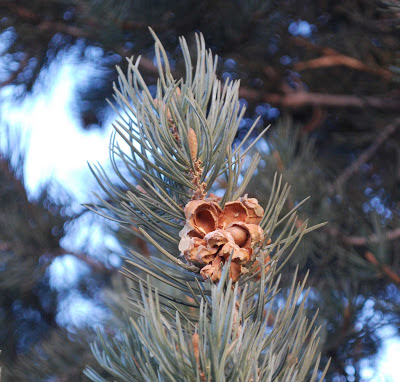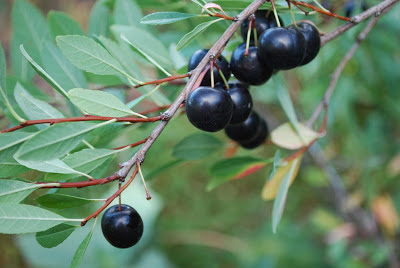I'm a bit behind the curve in writing about garden trends for 2013. Probably because I'm not a trendy kinda person. I'm more about quality classics; things worth investing in that I can enjoy for the long haul. So I just have two words for you today regarding "trends" because I think this idea is a culmination of current gardening passions, low-stress lifestyles, and low-water realities: edible natives.
Forget about boiled aspen bark and cattail roots. I'm talking about easily accessible berries, nuts, and foliage that you can toss in with your breakfast cereal or dinner salad, cook up into a sweet pie or jam, or decoct into a refreshing beverage. These are plants that are available at better nurseries / garden centers along Colorado's Front Range and are already being used in gardens and landscapes of all sizes. My list focuses on woody plants — those that form the structure of the garden and are your greatest investment.
Nuts
Gambel oak, Quercus gambelii (nuts ground into a flour or meal)
Pinyon pine, Pinus edulis


Boulder raspberry,
Rubus deliciosusGolden currant, Ribes aureumChokecherry,
Prunus virginianaSand cherry,
Prunus bessei |
| 'Pawnee Buttes' dwarf form of Prunus besseyi |
Buffaloberry,
Shepherdia argenteaBerries, sweetened for a lemonade-like beverage
Three-leaf sumac,
Rhus triloba
Smooth sumac,
Rhus glabraBerries, fresh or driedServiceberry, Amelanchier utahensis is the native variety,
A. canadensis is available commercially
Are there more choices? You bet. Native grape (
Vitus riparia) hawthorns, thimbleberry and elderberry, not to mention all the perennials and herbs (often considered weeds) like horehound (
Marrubium vulgare), mint, and chicory. These plants aren't as readily available for purchase, but might be fun to plan a foraging trip around.
Designing a landscape with edible natives means understanding the growing conditions necessary to keep the plants healthy, and combining them in ways to best show off their growth habits, foliage textures and colors.
Have you been growing edible native plants in your yard? I'd love to hear about it!
























































